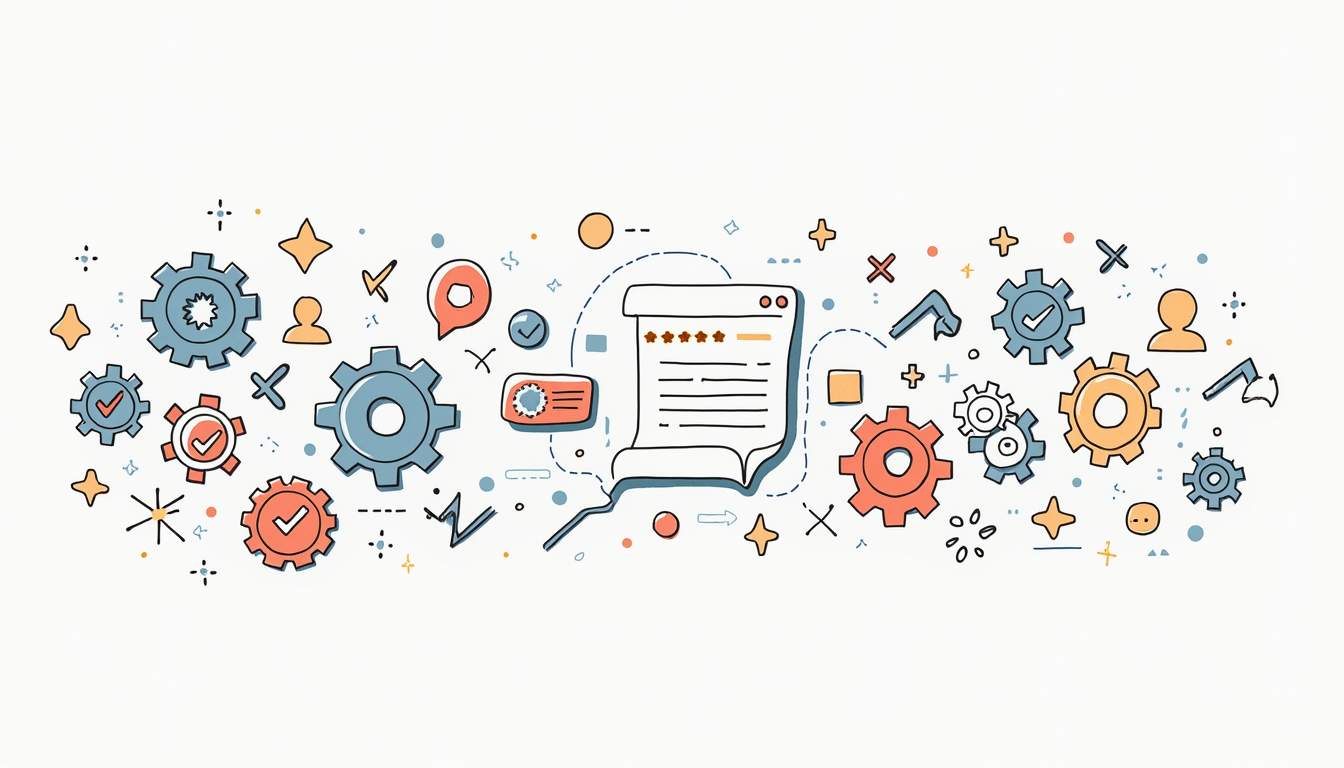Customer feedback is a critical element in understanding market demands and boosting sales performance. By effectively analyzing feedback, businesses can make informed decisions that cater to customer needs and enhance their overall experience. This comprehensive guide delves into the various aspects of customer feedback analysis, offering insight on how to harness its power for increased sales.
Understanding the Importance of Customer Feedback
Customer feedback is an invaluable asset for any business aiming to thrive in a competitive landscape. It serves as a direct line to customer satisfaction and loyalty levels, providing companies with the data needed to refine services and products. By actively soliciting feedback, businesses can gain a deeper understanding of their customers’ needs and preferences, allowing them to tailor their offerings more effectively.

Understanding customer feedback also allows businesses to identify areas of strength and opportunities for improvement. By integrating customer insights into decision-making processes, businesses can foster stronger customer relationships and drive long-term success. Moreover, leveraging this feedback can lead to the development of new features or services that directly address customer pain points, ultimately enhancing the overall customer experience.
The Role of Feedback in Business Growth
Feedback functions as both a mirror and a roadmap for businesses. It reflects customer perceptions and experiences while guiding future strategies. By fully embracing feedback, companies can cultivate innovation, driving growth through customer-centric solutions. This proactive approach not only helps in retaining existing customers but also attracts new ones, as positive word-of-mouth can significantly influence potential buyers.
The aggregation of customer feedback encourages transparency and collaboration, both internally and externally. Businesses that actively seek and act upon feedback signal their commitment to continuous improvement, which can enhance their brand reputation and customer trust. In addition, fostering an open feedback culture can empower employees, as they feel their contributions and insights are valued, leading to increased morale and productivity within the organization.
Types of Customer Feedback
Customer feedback can be categorized into several key types, each offering unique insights. Product feedback evaluates the functionalities and user experience, whereas service feedback addresses customer service interactions and overall engagement. These distinctions are crucial, as they allow businesses to pinpoint specific areas for enhancement, whether it be refining a product feature or improving customer service protocols.
Additionally, feedback can stem from multiple points in the customer journey, including customer support, sales experience, and post-purchase evaluations. Understanding these varied feedback types enables comprehensive insights into every aspect of the business-customer relationship. For instance, feedback gathered during the sales process can reveal potential barriers to purchase, while post-purchase evaluations can highlight areas where the customer experience can be further enriched, such as follow-up communications or loyalty programs. This holistic view of customer feedback ensures that businesses can make informed decisions that resonate with their audience’s expectations and desires.
Collecting Customer Feedback Effectively
Successful feedback collection requires strategic planning and implementation. The methodology must be customer-centric, ensuring that feedback processes are accessible and seamless for participants. This approach not only fosters a sense of trust and engagement among customers but also encourages them to share their thoughts openly, knowing that their opinions are valued and will be acted upon.
By utilizing diverse channels and thoughtful survey design, businesses can capture a wide range of insights essential for enhancing their offerings and meeting customer expectations. Moreover, integrating feedback into the decision-making process can lead to innovative solutions and improvements that resonate with the target audience, ultimately driving customer loyalty and satisfaction.
Channels for Gathering Feedback
There are numerous channels available for collecting customer feedback, each with unique advantages. Online surveys and feedback forms can reach a broad audience quickly and cost-effectively, while in-person interviews might provide deeper qualitative insights. Additionally, mobile apps can facilitate instant feedback from users, allowing businesses to gather opinions at critical moments during the customer journey.
Social media platforms and review sites are also valuable, offering real-time feedback and trends that businesses can leverage for rapid response and adjustments. Engaging with customers on these platforms not only helps in gathering feedback but also builds a community around the brand. Choosing the right mix of channels is critical to obtaining a holistic view of customer sentiment, and businesses should continuously analyze the effectiveness of each channel to optimize their feedback strategies.
Designing Effective Surveys and Questionnaires
Crafting engaging and effective surveys is crucial for high response rates and actionable data. Surveys should be clear, concise, and tailored to specific customer interactions to maximize relevance and accuracy. Utilizing visual elements, such as progress bars or engaging graphics, can make the survey-taking experience more enjoyable and encourage completion.
Incorporating a mix of open-ended and closed questions can enrich data quality, allowing for both quantitative analysis and qualitative insights. Regularly reviewing and refining surveys also ensures alignment with evolving business goals and customer dynamics. Additionally, implementing follow-up questions based on previous responses can provide deeper insights and show customers that their feedback is taken seriously, fostering a more engaged and loyal customer base.
Analyzing Customer Feedback
Once collected, the next step is to analyze feedback to extract meaningful insights. This process involves evaluating both qualitative and quantitative data to form a comprehensive understanding of customer experiences and perspectives.

Effective analysis helps businesses pinpoint strengths and weaknesses and uncovers opportunities for innovation and growth. By systematically reviewing feedback, companies can identify recurring issues, gauge customer satisfaction levels, and prioritize areas that require immediate attention or improvement. This proactive approach not only enhances customer loyalty but can also lead to increased revenue as satisfied customers are more likely to become repeat buyers and brand advocates.
Qualitative vs. Quantitative Analysis
Qualitative analysis focuses on narrative feedback, exploring themes and expressions of customer emotions and expectations. This method uncovers nuanced insights into customer motivations and satisfaction. For instance, analyzing customer comments on social media or reviews can reveal underlying sentiments that numbers alone cannot capture, such as frustration with a specific feature or delight with customer service. Understanding these emotional drivers is crucial for tailoring products and services to better meet customer needs.
On the other hand, quantitative analysis turns numerical data into patterns and trends, offering clear metrics and percentages that assist in measuring performance and changes over time. By employing statistical methods, businesses can track key performance indicators (KPIs) such as Net Promoter Score (NPS) or Customer Satisfaction Score (CSAT), which provide a snapshot of customer sentiment. Both analysis types are essential and often complementary, providing a richer perspective when used together. When qualitative insights are supported by quantitative data, organizations can make more informed decisions that resonate with their customer base.
Tools and Software for Feedback Analysis
Numerous tools and software solutions are available to facilitate effective feedback analysis. These tools range from basic spreadsheets for small-scale analysis to advanced analytics platforms that integrate artificial intelligence for deeper insights. Popular options include survey tools like SurveyMonkey and Qualtrics, which allow for easy collection and analysis of feedback, as well as customer relationship management (CRM) systems that track interactions and sentiment over time.
Selecting the right tools depends on the scale of feedback, available resources, and specific analysis needs. Investing in robust feedback analysis tools can significantly enhance a business’s ability to act on customer insights efficiently and accurately. Additionally, many of these platforms offer visualization features that help stakeholders quickly grasp complex data through charts and graphs, making it easier to communicate findings across departments. By leveraging these technologies, businesses can not only streamline their feedback analysis process but also foster a culture of data-driven decision-making that aligns closely with customer expectations and market trends.
Identifying Key Insights from Feedback
Identifying key insights involves sifting through data to uncover trends and actionable advice. This requires a systematic approach to ensure that significant findings are neither overlooked nor misinterpreted.
Clear insight identification aids in prioritizing business strategies and aligning resources efficiently to address the most significant customer concerns and opportunities.
Spotting Trends and Patterns
Spotting trends requires a keen eye for recurring themes and patterns that emerge across different sets of feedback. By doing so, businesses can predict changes in customer preferences and adapt accordingly.
Understanding these trends also offers foresight into potential market shifts, allowing companies to stay ahead of competitors by proactively meeting emerging demands.
Prioritizing Customer Suggestions
Not all customer suggestions will be feasible, but prioritizing them is essential for addressing the most impactful feedback. Businesses should evaluate suggestions against criteria such as customer impact, alignment with business goals, and potential ROI.
Through effective prioritization, companies can focus on changes that offer the greatest benefits, fostering customer satisfaction and loyalty while optimizing resources.
Implementing Changes Based on Feedback
Implementing changes from feedback is the final step in the feedback loop. This stage involves translating insights into actionable strategies that improve customer experiences and support business objectives.

Change implementation should be systematic and inclusive, encompassing all relevant departments to ensure comprehensive and effective execution.
Developing an Action Plan
An action plan serves as a roadmap for implementing feedback-driven changes. It outlines specific actions, assigns responsibilities, and establishes timelines, making sure that strategic goals are met efficiently.
An effective action plan is dynamic, allowing for mid-course adjustments based on real-time results and further feedback, ensuring continuous improvement and adaptability to changing customer needs.
Communicating Changes to Customers
Once changes are in place, communicating them effectively to customers is crucial. Transparency in communication demonstrates a company’s dedication to listening and evolving based on customer input.
Clear communication fosters trust and customer satisfaction, reinforcing a positive customer relationship and encouraging further feedback. Through newsletters, social media updates, and direct communications, businesses can keep their customer base informed and engaged.
Take Your Hotel’s Success to New Heights with Prosper Hotels
Understanding and acting on customer feedback is just the beginning. At Prosper Hotels, we elevate your hotel’s performance by integrating expert revenue management, innovative digital marketing, and streamlined group housing services. Our dedicated team is ready to help you transform insights into action, driving revenue growth and team satisfaction. Learn More about how we can assist in achieving your hotel’s maximum potential.


 Drive More Hotel Revenue
Through Untapped Strategies
Drive More Hotel Revenue
Through Untapped Strategies
